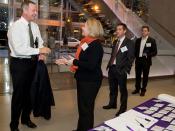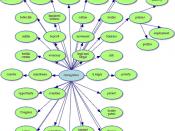Since 1945, more than 6 million people have come to Australia as new migrants. In 2003, this means that Australia is gaining a migrant every five minutes and 50 seconds. Today, nearly one in four of Australia's 20 million people were born overseas. Migrants have had an affect on all aspects of our society, including our social, cultural and economic development. They have made Australia a different and more populated place as well as a better one.
After the Second World War, an immigration program was introduced to increase the population and boost economic strength. The aim was to bring in mainly British immigrants, but in fact a growing proportion came from Eastern and Northern Europe, and then from Southern Europe in the 1950s and 1960s. After an interruption during the recession of the early 1970s, new currents of immigration from Asia, the Middle East, Latin America and New Zealand developed.
The overall picture has been of a planned policy of permanent immigration, with control facilitated by Australia's isolated geographical position. Migration has nonetheless had unforeseen consequences: the ethnic composition of migrant intakes has changed in a way that was neither predicted nor desired by the architects of the migration program. This has been partly because the need for labour during expansionary phases has dictated changes in recruitment policies. It has also been due to the way chain migration has led to self-sustaining migratory processes. The main result of the increase in ethnic diversity has been a move away from a narrow mono-cultural identity, to a new concept based on multiculturalism, which was officially introduced as a policy in the early 1970s.
Immigration has important social implications. It may effect wage levels, working conditions, employment and unemployment, housing conditions and social infrastructure. Immigrants and their children need education and training,



Nice.. A lot of good information
If only I had seen this last year when I needed some inspiration for my Essay for History =) Very nice job though
1 out of 1 people found this comment useful.